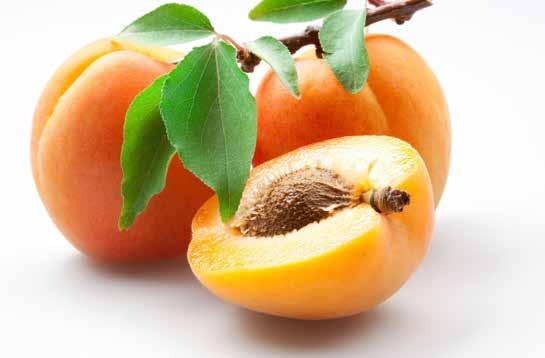
5 minute read
FASHION

ECO-FRIENDLY Bamboo Clothing Bamboo Clothing
Advertisement
By Peter Swift
The desire for sustainable, eco-friendly living is growing across all areas of society, but the fashion industry in particular has recently attracted a lot of criticism for lagging behind. From the waste of disposable fashion to the dubious ethics of thirdworld production facilities, clothing has a lot of progress to make with its environmental credentials. One of the ways the industry is starting to change for the better is through offering fabrics made from bamboo, which produces one of the most sustainable forms of natural fiber available. But for all its eco-friendliness, the idea of wearing bamboo clothing can seem strange to some people, sounding like a trade-off between comfort and environmental integrity. Nothing could be further from the truth. Here's why bamboo fiber makes an excellent clothing material, even if you ignore its unbeatable sustainability strengths. Amazingly Soft Texture
If the thought of bamboo conjures up images of tough, scratchy grasses, then you needn't worry about bamboo clothing being uncomfortable. Once the plants are processed into fiber, the fiber's rounded shape and smooth underlying structure makes material that's incredibly soft and comfortable to wear. Fresh and Airy Feeling
Bamboo fiber is filled with microscopic holes that provide excellent ventilation, keeping you feeling fresh for longer. What's more, these holes give bamboo a natural wicking effect that draws moisture away from your body and into the air, for longer-lasting comfort in warm conditions. Great Insulation
Those microscopic holes provide another benefit too. In cooler weather, they provide high levels of insulation against the chilly air, making bamboo a great lightweight inner or outer layer. Hypoallergenic Properties
Unlike some other clothing fibers like cotton or polyester, bamboo is hypoallergenic. This means it doesn't trigger any allergic reactions in the vast majority of people, even those with sensitive skin. If your clothes often leave you feeling itchy or sore, then bamboo may provide a solution. High UV Protection
Bamboo clothing can filter out up to 97.5% of damaging ultraviolet (UV) rays from sunlight. Combine this property with its excellent ventilation and lightweight comfort, and bamboo is the perfect material for wearing on hot, sunny days. Easy to Clean and Stays Crease-Free
Bamboo clothing is simple to wash and stands up well to heavy wearing, but it's also highly crease-resistant to remove the need for ironing. Bamboo clothing is almost impossible to wrinkle or pull out of shape, making it a durable and convenient choice for daily wear.
The environmental credentials of bamboo alone make it an attractive alternative to cotton or synthetics. But when you add in all the other benefits, it's clear that clothing made from bamboo fiber is heading for a bright and sustainable future.
AD
AD

APRICOTS
SOON THE COLORS OF WINTER WILL DRIFT AWAY LIKE LEAVES IN THE WIND AND MAKE WAY FOR THE VIBRANCY OF SPRING. FOR FRUIT LOVERS THIS SIGNALS THE BEGINNING TO A BOUNTIFUL TIME OF THE YEAR WHERE FRESH PRODUCE BEGINS TO SWING BACK INTO SEASON. ONE OF THE FIRST PLANTS TO BLOOM IS THE APRICOT TREE, AND LUCKY FOR US IT YIELDS A FRUIT BRIMMING WITH HEALTH BENEFITS AND FLAVOR.

By: Christian Dischler
Apricots carry an abundance of amino acids and minerals in their sweet flesh and tangy skin. While magnesium and selenium headline this list, an underrated benefit the fruit provides is assisting the body's vitamin B12 production. Compounds in the fuzzy skin help to clear out unwanted yeasts and molds in our systems, allowing B12 to perform at peak functionality. In addition, the fruit's flesh impedes our body's ammonia supply, an intrusive gas causing widespread issues ranging from our mouths to our gut. Simply ingesting one fresh apricot a day can give your body comprehensive rejuvenation, stabilize your energy levels and clear brain fog. But it's also a strong component in fighting specific ailments you might be experiencing. Cancer, gallstones, celiac disease, acne, asthma, chronic fatigue, diabetes, and Raynaud's syndrome are only a few of the conditions that apricots are known to help. Taking into account the versatility of this fruit it's hard to imagine why you wouldn't want to begin including them into your dietary plans. On top of their benefits for conditional problems, they also target certain symptoms you may be suffering: nausea, tiredness, unquenchable thirst, gum pain, shortness of breath, bloating, and countless others. So how can you maximize these benefits and ensure you're getting the most out of this adorable fruit? Begin by shopping for fresh apricots preferably from somewhere nearby. Fruits and vegetables maintain optimal nutrition the less time they


spend traveling to get to you. The majority of apricots in the US are grown in California, while some may be imported depending on the season. Dried apricots retain a surprising amount of their nutrition when compared to other dehydrated fruits, but if going this route be sure to purchase ones that are sulphur-free. The ideal amount to consume each day is 4 apricots, but one is better than none.
For fresh apricots it's imperative to allow the fruit to ripen before enjoying them. This can be a dance with temptation but it's well worth the wait. Not only will the flavor improve but their health benefits will also be heightened. If you've mastered the patience of waiting for fruit to ripen then you'll enjoy this next tip.
Try to consume apricots after 3pm, when their nutritional value peaks, encouraging our bodies to receive their bioactive compounds more readily.
Including apricots in your diet is easy considering how delicious and versatile they are. Try slicing some to put on a savory grilled cheese with rosemary or making some hot pepper apricot jam. The possibilities are as endless as their benefits.








